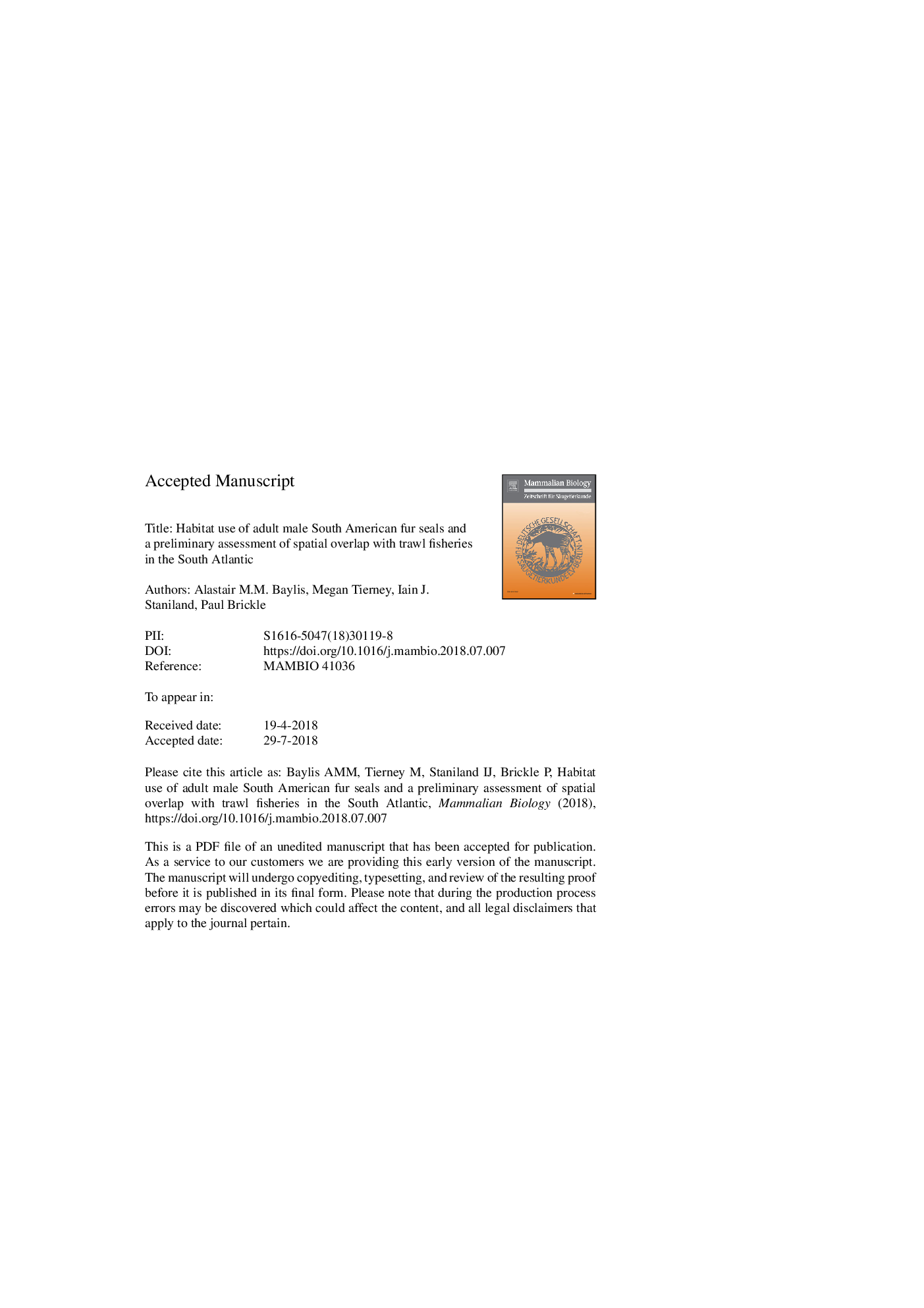| Article ID | Journal | Published Year | Pages | File Type |
|---|---|---|---|---|
| 9954513 | Mammalian Biology - Zeitschrift für Säugetierkunde | 2018 | 20 Pages |
Abstract
Little is known about the movement ecology of male South American fur seals (SAFS; Arctocephalus australis). To begin to address knowledge gaps we used satellite telemetry to track four adult male SAFS at the Falkland Islands over the non-breeding period, from May to December. Our aims were to describe adult male SAFS habitat use and quantify spatial overlap between male SAFS and commercial trawl fisheries. Foraging trip duration ranged from an individual mean of 8.6â±â6.7 days to 39.2â±â9.7 days. Adult males typically behaved like central place foragers and foraging trips were restricted to the Patagonian Shelf and shelf slope (mean distance 251â±â239âkm). However, some males ventured as far as 990âkm to the north of the Falkland Islands. Overall, male SAFS spent 64% of their time in areas of trawl fishing activity, with the majority of overlap occurring within the Argentinean Exclusive Economic Zone (56%) and the Falkland Islands Exclusive Economic Zone (43%). Although overlap does not necessarily equate to interaction, the extent to which SAFS and fisheries interact is currently poorly understood. The emerging picture from our study is that SAFS and fisheries overlap and potentially interact across large spatial scales and multiple fishery jurisdictions.
Related Topics
Life Sciences
Agricultural and Biological Sciences
Animal Science and Zoology
Authors
Alastair M.M. Baylis, Megan Tierney, Iain J. Staniland, Paul Brickle,
